| Date | Text | |
|---|---|---|
30 Nov 1920

Winkel tripel projection |
Winkel tripel projection (cartography) Winkel tripel projection proposed. |
|
30 Nov 1920

Étienne Biéler |
Étienne Biéler (chemistry) Étienne Biéler and James Chadwick publish a key paper on the strong interaction. |
|
30 Nov 1920
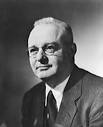
Thomas Midgley |
Thomas Midgley (chemistry) Thomas Midgley discovers the effective anti-knocking properties of tetraethyllead, which is used in "leaded" gasoline (petrol). |
|
30 Nov 1920

Danish |
Danish (exploration) Danish explorer Lauge Koch first sets foot on and names Kaffeklubben Island, the northernmost point of land on Earth. |
|
30 Nov 1920
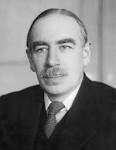
John Maynard Keynes |
John Maynard Keynes (mathematics) John Maynard Keynes publishes A Treatise on Probability. |
|
30 Nov 1920

Emmy Noether |
Emmy Noether (mathematics) Emmy Noether publishes Idealtheorie in Ringbereichen, developing ideal ring theory, an important text in the field of abstract algebra. |
|
30 Nov 1920

Ludwig Wittgenstein |
Ludwig Wittgenstein (mathematics) First publication of Ludwig Wittgenstein's Tractatus Logico-Philosophicus, as "Logisch-Philosophische Abhandlung" in Annalen der Naturphilosophie. |
|
30 Nov 1920

American |
American (medicine) American biochemist Elmer McCollum identifies the presence of a component in cod liver oil which cures rickets, which he calls vitamin D. |
|
30 Nov 1920
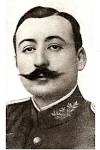
Fidel Pagés |
Fidel Pagés (medicine) Fidel Pagés pioneers epidural anesthesia. |
|
30 Nov 1920

T. Kaluza |
T. Kaluza (physics) T. Kaluza demonstrates that a five-dimensional version of Albert Einstein's equations unifies gravitation and electromagnetism. |
|
30 Nov 1920

Hermann Rorschach |
Hermann Rorschach (psychology) Hermann Rorschach publishes Psychodiagnostik, proposing the inkblot test. |
|
30 Nov 1920

Gaëtan Gatian de Clérambault |
Gaëtan Gatian de Clérambault (psychology) Gaëtan Gatian de Clérambault publishes Les Psychoses passionelles, a comprehensive review of erotomania. |
|
30 Nov 1920
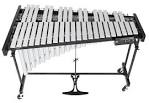
vibraphone |
vibraphone (technology) The vibraphone in its original form is invented in the United States. |
|
30 Nov 1920

E. W. Scripps |
E. W. Scripps (institutions) Journalist E. W. Scripps and biologist William Emerson Ritter found Science Service, later renamed Society for Science and the Public, in the United States with the goal of keeping the public informed of scientific developments. |
|
23 Jan 1921
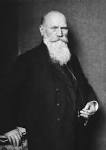
Wilhelm Waldeyer |
death Wilhelm Waldeyer Died 23 Jan 1921 at age 84 (born 6 Oct 1836). Heinrich Wilhelm Gottfried von Waldeyer-Hartz was a German anatomist who coined the terms neuron (1891) and chromosome (1888), and a number of embryological terms (including those to describe the structure of developing teeth). In 1856, he began university studies in natural science, but his interest turned to medicine and anatomy. After completing his doctoral dissertation (published 1862), he began teaching physiology, and thereafter published several papers on pathology. One of these, on the histological changes in muscles following typhoid fever, led at age 29 to appointment as a professor of pathology. He studied the diagnosis of early cancer, and in 1887 was one of the German doctors that diagnosed a tumor of his vocal cords for Emperor Frederick III. For over 30 years of his later career, until age 80, he was director of the anatomy department at the University of Berlin. |
|
11 Mar 1921

Léopold Reichling |
birth Léopold Reichling Léopold Reichling (died 2009), Luxembourg biologist and naturalist. |
|
29 Mar 1921
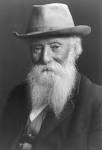
John Burroughs |
death John Burroughs John Burroughs (born 1837), naturalist. |
|
31 Mar 1921
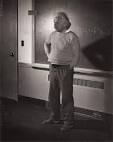
Einstein lecture |
Einstein lecture In 1921, Professor Albert Einstein arrived in New York to give a lecture on his new theory of relativity. |
|
21 Apr 1921

John R. Huizenga |
birth John R. Huizenga John R. Huizenga (died 2014), American nuclear physicist. |
|
30 Apr 1921

Ralph A. Lewin |
birth Ralph A. Lewin Ralph A. Lewin (died 2008), Anglo-American biologist, "the father of green algae genetics". |
|
18 May 1921

Olgierd Zienkiewicz |
birth Olgierd Zienkiewicz Olgierd Zienkiewicz (died 2009), British civil engineer. |
|
14 Jun 1921

George Rédei |
birth George Rédei George Rédei (died 2008), Hungarian biologist. |
|
25 Jun 1921

Coal to oil |
Coal to oil In 1921, German chemist, Friedrich Karl Bergius invented a way to convert coal dust and hydrogen directly into gasoline and lubricating oils without isolating intermediate products, In Stuttgart, Bergius succeeded in distillating coal while forcing hydrogen under high pressure to combine chemically with the coal, transforming more carbon from the coal into oils than is possible with conventional distillation. To solve heat distribution and temperature regulation problems, Bergius invented treating a mixture of pulverized coal in oil with the gas under high pressure. For his work in developing the chemical high pressure hydrogenation method necessary for this process he shared the 1931 Nobel Prize for Chemistry with German, Carl Bosch. |
|
04 Jul 1921

Aron Arthur Moscona |
birth Aron Arthur Moscona Aron Arthur Moscona (died 2009), American developmental biologist. |
|
13 Jul 1921

Gabriel Lippmann |
death Gabriel Lippmann Died 13 Jul 1921 at age 75 (born 16 Aug 1845). Gabriel Jonas Lippmann was a French physicist who was awarded the Nobel Prize for Physics in 1908 for producing the first colour photographic plate. Lippmann was a giant of his day in classical physics research, especially in optics and electricity. He worked in Berlin with the famed Hermann von Helmholtz before settling in Paris to head (in 1886) the Sorbonne's Laboratories of Physical Research until his death. His inventions include an instrument for precisely measuring minute differences in electrical power and the “coleostat” for steady, long-exposure sky photography. |
|
15 Jul 1921

Bruce Merrifield |
birth Bruce Merrifield Born 15 Jul 1921; died 14 May 2006 at age 84. Robert Bruce Merrifield was an American biochemist who received the 1984 Nobel Prize for Chemistry for his development of the solid phase peptide synthesis method to build up large organic molecules on a solid matrix. He first attached an amino acid to small plastic polymer spheres, then added other amino acids, one after another, until a polypeptide chain was built up. The chain was then released from the polymer. Chains of amino acids can thus be built in any predetermined order to synthesize a wide variety of proteins, hormones, and other organic molecules. Merrifield's work has encompassed the development of resins, protecting groups and chemical strategies, and the engineering which brought automation to peptide chemistry. |
|
18 Jul 1921
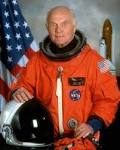
John Herschel Glenn Jr. |
birth John Herschel Glenn Jr. Born 18 Jul 1921. American astronaut and statesman. |
|
18 Jul 1921

BCG |
BCG (medicine) The first BCG vaccination against tuberculosis. |
|
27 Jul 1921

University of Toronto |
University of Toronto (medicine) Researchers at the University of Toronto led by biochemist Frederick Banting announce the discovery of the hormone insulin. |
|
05 Oct 1921

Mahlon Hoagland |
birth Mahlon Hoagland Mahlon Hoagland (died 2009), American biochemist, discoverer of transfer RNA (tRNA). |
|
21 Oct 1921

Victor A. McKusick |
birth Victor A. McKusick Victor A. McKusick (died 2008), American "father of genetic medicine". |
|
23 Oct 1921

John Boyd Dunlop |
death John Boyd Dunlop John Boyd Dunlop (born 1840), inventor. |
|
25 Oct 1921
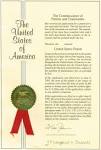
patent |
patent (technology) Hugo A. F. Abt is granted a patent for his design of bascule bridge. |
|
12 Dec 1921
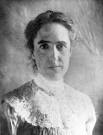
Henrietta Swan Leavitt |
death Henrietta Swan Leavitt Died 12 Dec 1921 at age 53 (born 4 Jul 1868). American astronomer who was known for her discovery of the relationship between period and luminosity in Cepheid variables, pulsating stars that vary regularly in brightness in periods ranging from a few days to several months. Leavitt's greatest discovery came from her study of 1777 variable stars in the Magellanic Clouds. She determined the periods of 25 Cepheid variables and in 1912 announced what has since become known as the famous Period-Luminosity relation: “since the variables are probably nearly the same distance from the earth, their periods are apparently associated with their actual emission of light, as determined by their mass, density, and surface brightness.” Today the Period-Luminosity relation is used to calculate the distances of galaxies. |
|
22 Dec 1921

James Mooney |
death James Mooney Died 22 Dec 1921 at age 60 (born 10 Feb 1861). Early American ethnographer of American Indians, especially those of the southeastern United States. His investigations of the history, heraldry, and culture of the Cherokee and Kiowa included the deciphering of the Kiowa calendar and the discovery of an ancient ritual of the North Carolina Cherokee recorded in the native script. |